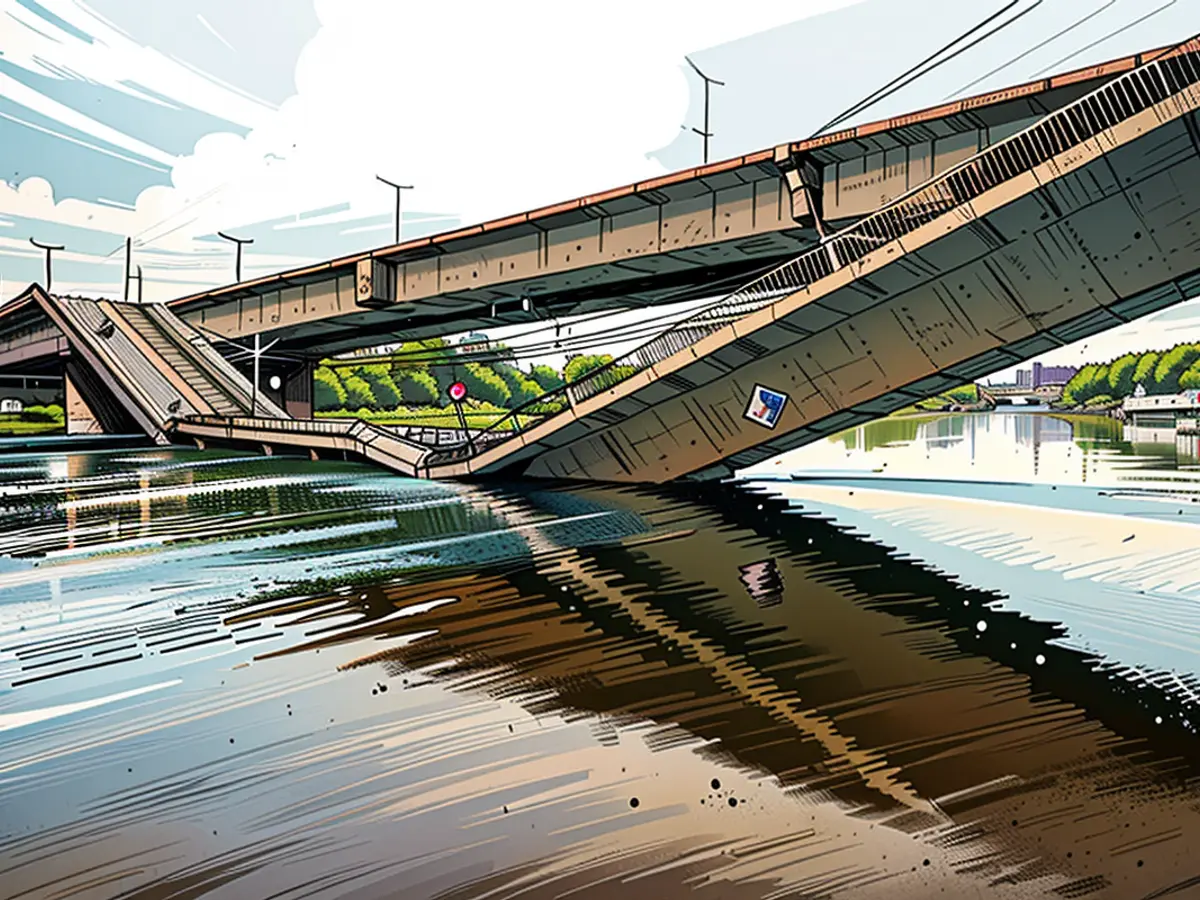Dresden encounters structural failure with a bridge. - "The bridge's state of stability was uncertain"
The Carol Bridge, a significant route in Dresden's city center, is one of the four Elbe crossings, serving daily commuters, trams, cyclists, and pedestrians alike. Sadly, during the dead of night, a portion of the infrastructure succumbed, narrowly averting a potential catastrophe.
Fortunately, to date, no reported injuries or casualties are associated with this unfortunate event. Preliminary investigations by law enforcement suggest an accidental occurrence, with no apparent external influence.
Just 18 minutes prior to the partial collapse, the last tram traversed the Carol Bridge, as per Dresden's public transport records. Hence, passengers and vehicles were spared from harm. Trams lines 3 and 7 regularly utilize this bridge, even at nighttime.
The bridge and surrounding streets have been shut down temporarily. The pedestrian path, cycle lanes, and tram tracks have all been affected, according to the crisis management center's reports. The collapsed section spans approximately 100 meters. A conspicuous one-meter crack was discovered at the bridgehead on the old town side.
Initial assessments indicate that the Carol Bridge in Dresden had fallen into disrepair. The cause behind the bridge's partial collapse remains unclear, but engineers suspect corrosion. "During the GDR era, substantial chloride ingress occurred here," said Holger Kalbe, head of the bridge and engineering structures department at Dresden city council. "Chlorides may have infiltrated massively at this point, leading to reinforcement corrosion within the bridge."
The Carol Bridge comprises three concrete spans. Post-extensive restorations in March 2024, other parts of the bridge resumed traffic. The middle span's renovation concluded in early June 2024 with railing installation, costing approximately 4.1 million euros. In 2021, the eastern third span's renovation was completed.
The scheduled renovation for the collapsed third section was slated for the following year. "The state of Span C was so poor that it resulted in the collapse, a situation we did not foresee," said Holger Kalbe, head of bridge construction. "It's not feasible to examine the internal structures of such infrastructure." Now, the priority is to verify the safety of the remaining two spans. An analysis will be conducted for this purpose.
In the meantime, the fire department issues an imminent collapse warning. "We anticipate further bridge sections collapsing," a spokesperson explained on-site. They urged the public to keep away from the bridge due to life-threatening hazards. A drone team has been deployed to assess the extent of the damage.
The morning rush hour will likely experience significant disruptions, with trams and vehicles being rerouted. The federal waterway, Elbe cycle path, and riverside terrace are currently closed, according to the police's announcement.
Two district heating pipelines were also impacted by the bridge collapse. At the bridgehead, streams of hot water are gushing out, submerging parts of the riverside terrace. The entire city's warm water supply is disrupted, according to the fire department's spokesperson in a social media video. They expect these issues to persist throughout Wednesday.
The existing Carol Bridge, named after the wife of Saxon King Albert, Carola of Wasa-Holstein-Gottorp, was completed in 1971. It is 30 meters wide, carrying the four-lane federal road 170 and separate tram tracks, with a pillar supporting it in the river.
Despite the partial collapse of the Carol Bridge being in Germany, authorities have not issued any travel advisories for visitors as of yet. The Carol Bridge, a vital transportation hub in Dresden, is currently undergoing an extensive evaluation by engineers to ensure the safety of the remaining two spans.






